#High-Performance Racing Axles
Explore tagged Tumblr posts
Text
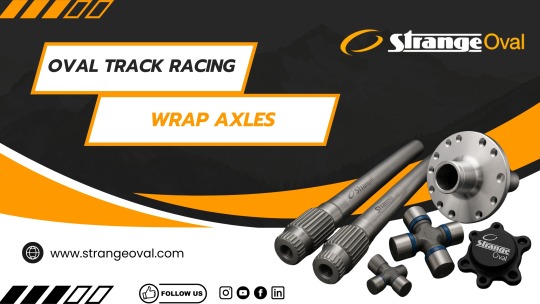
High-Performance Oval Track Racing Wrap Axles – Strange Oval
Strange Oval offers top-quality Oval track racing wrap axles engineered for strength, durability, and precision. Perfect for high-stress racing conditions, these axles reduce rotational weight while maximizing traction and control. Trust Strange Oval for unmatched performance and innovation on every lap. Designed for serious oval track racers.
Contact Information:
For more details or to request a sample, visit Oval Track Racing Wrap Axles or contact Strange Oval directly:
Phone: 800-653-1099
Choose the Oval Track Racing Wrap Axles for a reliable, efficient, and high-quality products.
Stay in touch with the latest product developments and company news:
Facebook
Youtube
X
#Strange Oval Wrap Axles#KERA Axles#Oval Track Racing Axles#Split Diameter Axles#Equal Diameter Axles#Late Model Racing Axles#Modified Racing Axles#Stock Car Axles#Torsional Twist Axles#High-Performance Racing Axles#Durable Racing Components#Precision Machined Axles#Lightweight Racing Axles#Enhanced Traction Axles#Asphalt Racing Axles#Dirt Track Racing Axles#Racing Axle Technology#Strange Engineering Axles#NASCAR Approved Axles#Performance Racing Parts
1 note
·
View note
Text

Drag Racing Rear Ends | Strange Engineering
Strange Engineering’s drag racing rear ends are built for hardcore performance, offering unmatched strength, durability, and customization for high-horsepower drag race applications. Designed for racers who demand consistent launches and maximum power transfer, these rear ends are the trusted choice on and off the track.
Key Features of the Product:
Heavy-Duty Construction – Fabricated housings with internal gusseting for maximum rigidity
Custom Configurations – Available in Ford 9", S60, and Ultra Rear setups
High Torque Handling – Built to withstand extreme launches and shock loads
Race-Tested Reliability – Proven on the track by professionals across multiple classes
Multiple Suspension Brackets – Supports various suspension setups including 4-link and ladder bar
Contact Information:
For more details or to request a sample, visit Strange Engineering’s drag racing rear ends or contact Strange Engineering directly:
Phone: 800-646-6718
Choose the drag racing rear ends for a reliable, efficient, and top performance.
Stay in touch with the latest product developments and company news:
Facebook
Youtube
X
Instagram
#drag racing rear ends#Strange Engineering rear ends#race car rear axle#high performance rear ends#9 inch Ford rear ends#complete rear end assemblies#custom drag racing rear ends#rear end housing kits#rear axle solutions#drag car drivetrain#Strange Engineering drag rear ends#complete rear end for race cars#9 inch Ford rear axle assembly#high strength rear end kits#performance rear end housings
2 notes
·
View notes
Text

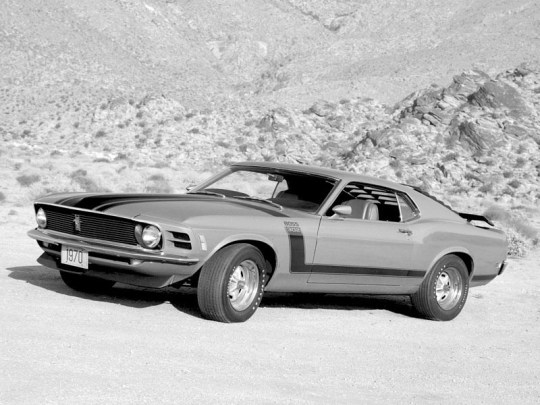
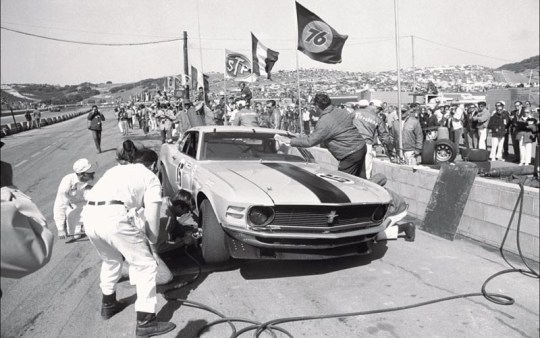
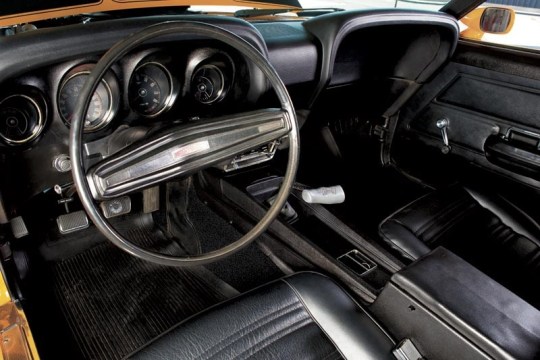
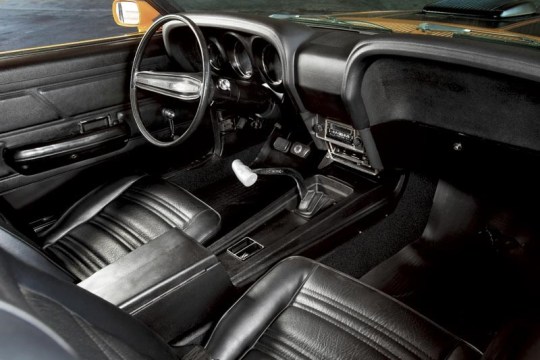
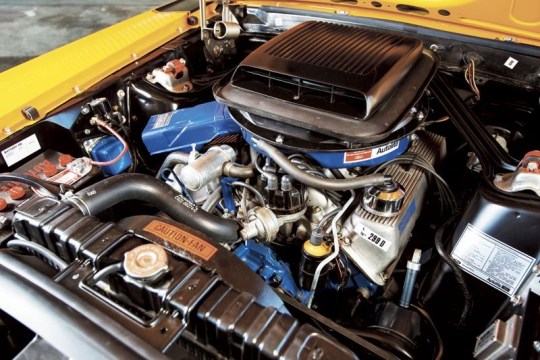


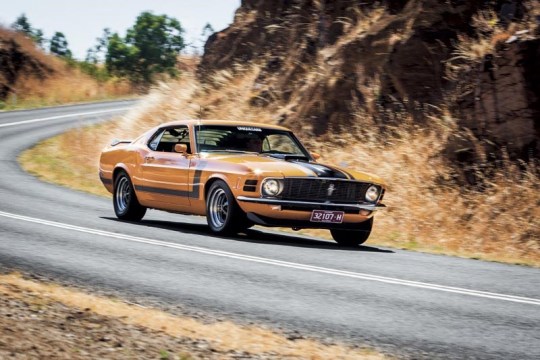
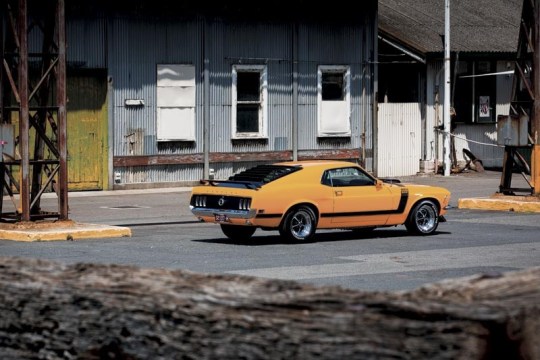
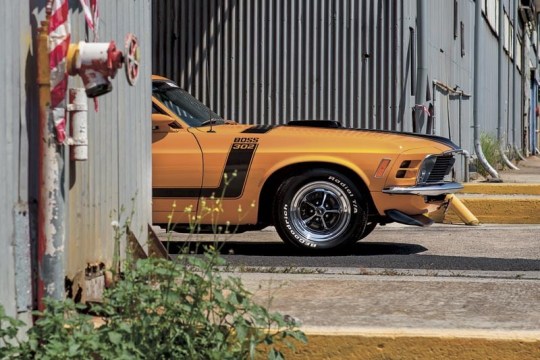
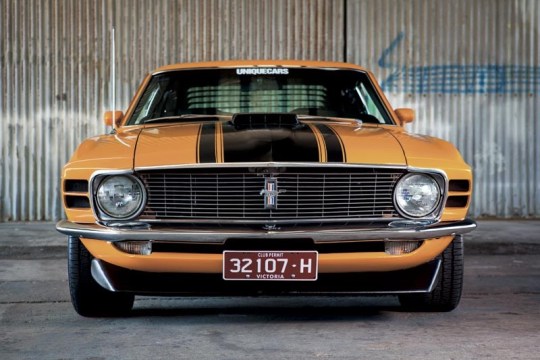
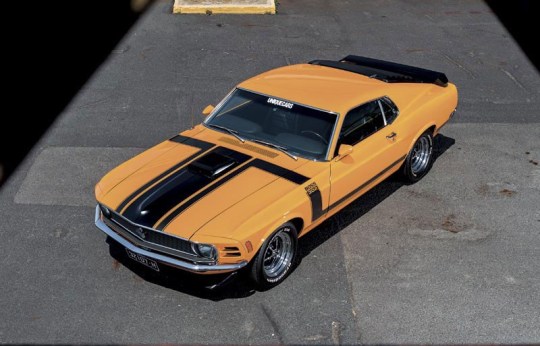
FORD MUSTANG BOSS 302
BOSS-A-NOVA!
They called it The Boss and for two short years it ruled the muscle car scene in the US, establishing itself as one of the greatest road and race cars of the era. Now, it’s one of the most collectible.
In 1960s US street lingo, if something was ‘boss’ it was cool, tough, the best. And the 1969 Boss 302 Mustang wore its badge with pride. It launched just four and a half years after the first Mustang was revealed to critical acclaim and record sales. Yearly updates to keep Mustang fresh in the face of tough new challengers from General Motors and Chrysler (particularly the Camaro) resulted in the once lean and pretty ’Stang muscling up, both in body shape and under-bonnet brawn, and the 1969-70 Boss models were the zenith of Mustang styling.
Thereafter, Mustangs became increasingly bloated and anaemic as the 1970s fuel crisis and stricter pollution laws cut horsepower and stylists lost their way; the rippling flanks and thrusting nose of the late 60s/early 70s cars gave way to boxy, bland designs. That early look would not be recaptured until 2005, when new Mustangs were given retro styling.
The Boss 302 was launched at the same time as its big-block brother, the Boss 429. Both were positioned as competition specials; Ford wanted to homologate its 302-cuber for Trans-Am and the 429ci monster for NASCAR. In fact, Ford went wild with engines between 1969-70, offering nine V8s – the ‘economy’ 302, 351 Windsor, 351 Cleveland, 390, 428 Cobra Jet, 428 Super Cobra Jet, 429 ‘wedge’, Boss 302 and Boss 429.
For the Boss 302, Ford’s high-compression 302ci small-block V8 was beefed up with four-bolt main bearing caps and redesigned ‘Cleveland’ cylinder heads with bigger inlet and exhaust valves, and ports that allowed the engine to breathe more efficiently.
These ‘semi-hemi’ heads were based on the Ford 427ci racing engine’s combustion chambers, and a balanced forged steel crankshaft and forged steel conrods allowed the engine to handle high rpms for sustained periods. A single 780cfm four-barrel Holley carburettor sat atop a high-rise aluminium inlet manifold, while a dual-point distributor, high-pressure oil pump, windage tray and screw-in welch plugs were further indications of its competition intent.
A rev limiter was fitted, progressively cutting spark from 5800rpm to 6150, but it was easily bypassed and the Boss 302 could reportedly keep making power up to 8000rpm with minor mods. In the muscle car marketing war, Ford claimed a peak horsepower figure of 290bhp at 5800rpm (the same as the Camaro Z/28), but that was extremely conservative.
Two four-speed manual Top Loader transmissions were available: a wide-ratio ’box with Hurst shifter more suited to street and strip use, and a close-ratio unit for racing. Adding to the race or road options list were four diffs: the stock 3.5:1 nine-inch, Traction-Lok 3.5:1 and 3.91:1 and the No-Spin 4.30:1 built by Detroit Automotive. Axles and diff centres were also strengthened to take the loads.
Suspension was also race-inspired with heavy-duty springs, shocks and sway bar up front, and Hotchkiss-style rear suspension with heavy-duty leaf springs, sway bar and staggered shock absorbers. The left-hand shock absorber was bolted behind the axle and the right in front, to reduce axle tramp under acceleration. Amazingly for such a high-performance car, braking was still only discs and drums with power assistance.
Ironically, the Boss 302’s sexy shape was styled by former General Motors designer Larry Shinoda, who is often credited with coming up with the Boss moniker. When asked what he was working on, he replied, "The boss’s car", a reference to new Ford president ‘Bunkie’ Knudson, who was also ex-GM and had recruited Shinoda to Ford.
While the wheelbase remained unchanged at 2740mm, the ’69 Mustang was 96.5mm longer overall to accommodate all the V8s offered, although the big-blocks still had to be shoe-horned under the bonnet. Shinoda’s ’69 Boss 302 was also one of the first production cars to offer an optional front air dam and adjustable rear wing, and his use of high-contrast black panels, rear window SportsSlats, and go-faster stripes made the Boss a real attention-grabber. The ’69 was also the only quad-headlight Mustang, a feature that was dropped for 1970 models.
In 1970, American Hot Rod magazine dubbed the 1970 Boss 302 as "definitely the best handling car Ford has ever built", while the conservative Consumer Guide called it "uncomfortable at any speed over anything but the smoothest surface". Unique Cars resident Mustang maniac, ‘Uncle’ Phil Walker, never read the Consumer Guide review, but even if he had it wouldn’t have stopped him buying the immaculate 1970 Grabber Orange Boss 302 you see here.
Phil already has his beloved 1966 Shelby GT350H, but the Boss 302 really got his Mustang juices percolating. And he wasn’t alone, because the first Boss he saw, some 43 years ago, is still one of Australia’s most iconic race cars: Allan Moffat’s Trans-Am racer. Phil remembers it clearly.
"I saw Moff race it Calder and I was inspired to own one," Phil recalls. "It was the most aggressive-looking car; its stance was something you had to see to believe. It looked like it was doing a million miles per hour when it was parked.
"My Boss was originally a one-owner car and I bought it from a friend of mine in California, Dave, who I also bought my Shelby GT350H from 19 years ago. Dave found it in a barn with a blown engine, but in otherwise pretty good condition.
"The lady who owned it from new didn’t realise it had a high-compression engine and had run it on standard fuel. When it blew up she just parked it.
"Dave did a nut-and-bolt restoration over two years, then put it up on his hoist. He didn’t want to sell it, but I got my way in the end – unfortunately he had the last say on the price (laughs). I didn’t even bother to test drive it; I knew it was a good car. It had 21 (new) miles on the odo when I picked it up and only 54,000 miles in total."
Since then, Phil has only put a couple of hundred miles on the car, but that’s enough for him to have bonded with it.
"I’ve only had the Boss since January and it’s growing on me. It’s different to the Shelby. It’s bigger and very low.
"The engine is incredible. Dave is one of the best engine builders in California and when he rebuilt the 302 he changed the cam spec. US camshaft technology was okay in the 60s and 70s, but if you had a big-cam muscle car they wouldn’t idle and they were terrible for driving in cities.
"A proper Boss engine can rev to 8500rpm all day and for a V8 that’s pretty serious. But they’re not renowned for low-down torque; it starts coming on from 3500rpm. My car still has a solid-lifter cam, but it pulls like a train from 1200rpm in top gear and I can drive it around at 1500rpm in top all day.
"It’s got the four-speed close-ratio Top Loader with the long first gear and with a 3.7:1 rear end it does about 55-60mph (89-97km/h) in first gear. It bloody goes!"
Phil is a fussy bugger and his cars have to look just right, so Russell Stuckey from Stuckey Tyres has ordered him a set of genuine 15 x 8 Minilites from England to replace the standard Magnum 500s.
"I want it to look like the Parnelli Jones race car, and to get the stance I want it’s going to have 275/60s on the rear and 255/60s on the front. At the moment it’s a pretty car that is tough, but I want a tough car that looks tough. And that’s all I’m going to do to it."
After his first real fang in the Boss, Phil felt that his Shelby would be half a lap in front at the end of a 10-lap sprint at Sandown, but now thinks the Boss would be quicker. We might have to put both to the acid test one day. What do you mean "no way", Phil?
It was a nervous Phil who turned up at a Melbourne storage facility in January to pick up his new Boss 302. So nervous, in fact, that he took along Unique Cars art director Ange and a sturdy tow rope – just in case.
The storage people were even more apprehensive – they had been warned about just how anal he is with his cars, as he explains: "The lady there said, ‘You must be pretty fanatical because we’ve been given strict instructions that no one is to touch the car except you’." Fortunately, the car arrived in pristine condition.
"I was pretty excited, I’d been waiting for seven weeks," Phil laughs. "I took the car cover off it, fired it up, and it drove home like a brand new car. It was as good as I thought it would be. I spent the next three hours washing it."
Sounds like our Phil.
PARNELLI AND ME
Three years ago, my mate Dave and I were invited to a Trans-Am dinner at Portland International Raceway where Dave was racing his 1970 Trans-Am Boss 302 and I was crewing for him.
When we were driving there we noticed this black Mercedes following us. When we stopped it did too and this bloke got out and said, "I noticed you guys back at the hotel. You’re going to the Trans-Am dinner aren’t you? I’m lost." It was Parnelli Jones!
I jumped in with him and when we got there I ‘invited’ myself onto Parnelli’s table, which also included Pete Brock – the guy who designed the Shelby Daytona Coupe. There was I, Mr Nobody, with all these US racing heavies, but Parnelli was a real gentleman, not up himself in any way.
The next day they had free lap time at Portland and, when I saw Parnelli there with Ford’s new ‘Parnelli Jones’ Boss 302 tribute Mustang, I asked if there was any chance of a ride and he said jump in. We did 10 laps and the guy hadn’t lost any of his ability; my eyes were getting bigger and bigger coming into the corners.
It was a great experience that I’ll never forget. – PW
IT's MINE...
Moff’s Mustang is probably the most iconic Australian racecar and after seeing it I was inspired to own a Boss Mustang. Then, about 25 years ago, I went to Pebble Beach in Monterey for the first time and saw a 1970 Grabber Orange Boss 302, which was the colour Parnelli Jones raced in Trans-Am. That day I knew I had to own a Boss. It was the car I’d always wanted after my Shelby, which was my lifelong dream car.
My Boss 302 is fully optioned, including the Shaker, extra side mirror, tacho and rear louvres, and it’s got a lot of wow factor. When you drive down the freeway, you get the thumbs-up from all sorts of different people. I think it’s the colour.
It’s closer to show standard than my Shelby. It’s got the paint marks on the tailshaft and all the little concours details, but I’m never going to show it; I’m not into that.
The 1969/70 body shape is still the best. Ford got it right then, but lost the plot after that and it’s reflected in their collectibility today. – PW
#car#cars#muscle car#american muscle#ford#FORD MUSTANG BOSS 302#ford mustang#boss 302#MUSTANG BOSS 302#mustang
171 notes
·
View notes
Text

AMG GT R Pro „The Monster of The Green Hell“.
Back in the days the AMG GT R PRO was characterised by yet further improved driving dynamics, in particular on the racetrack. The experience from the AMG GT3 and AMG GT4 racing cars entered into the development.
The measures from motorsport can be clustered in four areas: suspension, lightweight construction, aerodynamics and looks.
Suspension: the optimal set-up
The AMG coil-over suspension offers even more choices for tailoring the set-up to the particular circuit. As in professional motorsport, the driver is not only able to set the spring preload length mechanically, but can now also adjust the compression and rebound of the dampers. This is done quickly and precisely without tools via a click system with an integral adjustment dial on the damper. The compression rate is adjusted separately for high-speed and low-speed movements.
This means that the settings can be dialled-in for slow and fast compression movements as is common practice in motorsport. This allows influencing the body dive and roll as the well as the traction of the AMG GT R PRO even more selectively.
The front axle is fitted with an adjustable torsion bar made of lightweight carbon fibre. Its counterpart at the rear is made of steel, is likewise adjustable and also saves weight due to its hollow tube design.
The AMG GT R is already fitted with Uniball spherical bearings at the lower wishbones of the rear axle. The AMG GT R PRO now gets these bearings also for the upper wishbones.
Mercedes-AMG One man, one engine Handcrafted by Michael Kübler @f1mike28 in Germany Affalterbach. Driving Performance is our Passion! Mercedes-AMG the Performance and Sports Car Brand from Mercedes-Benz. Mercedes-AMG Handcrafted by Racers.
Fuel consumption combined: 12,5 - 11,4 l/100 km | CO2-Emissions combined: 284 - 261g/km.
#amg#amggt#amggtroadster#amggtrpro#amggtr#amggtrroadster#gtrpro#gtr#gtrroadster#mercedesamg#mercedes#mercedesbenz#affalterbach#onemanoneengine#pagani
12 notes
·
View notes
Video
youtube
The 24 Hours of Le Mans is by far the most prestigious event in endurance racing. For 2025, the Hypercar category brings together the most advanced hybrid prototypes ever developed, with entries from global manufacturers under two distinct rule sets: Le Mans Hypercar (LMH) and Le Mans Daytona h (LMDh).
These are the top contenders for the 2025 24 Hours of Le Mans, machines that represent the forefront of hybrid endurance racing technology.
The BMW M Hybrid V8. Built under LMDh rules, it features a 4.0-liter twin-turbo V8 paired with a standardized hybrid system. Power is electronically capped at 680 horsepower, as per class regulations. Built on a Dallara chassis, BMW joined the WEC in 2024, aiming for overall victory in 2025.
The Ferrari 499P, a factory-built LMH car. It uses a 3.0-liter twin-turbo V6 mid-mounted, coupled with a front-axle hybrid motor for all-wheel drive. Like all entries in this category, it produces a combined 680 horsepower. After winning Le Mans in 2023, Ferrari remains a key contender.
The Aston Martin Valkyrie AMR-LMH enters in 2025. Based on the road-going Valkyrie, it features a high-revving 6.5-liter naturally aspirated V12 developed by Cosworth and a hybrid system. Despite the unique powertrain, total output stays within the regulated 680 horsepower limit.
Porsche’s 963 runs under LMDh regulations. It uses a 4.6-liter twin-turbo V8 derived from the RS Spyder, paired with a spec hybrid system, delivering a combined 680 horsepower. The chassis is supplied by Multimatic, and the car continues Porsche’s legacy in endurance racing.
Peugeot’s 9X8 brings bold design choices, most notably a no-rear-wing aerodynamic concept. It’s powered by a 2.6-liter twin-turbo V6 and a front-mounted electric motor. Like its LMH rivals, it runs with 680 horsepower and all-wheel drive above 150 kilometers per hour.
Toyota’s GR010 Hybrid has been the benchmark since 2021. It features a 3.5-liter twin-turbo V6 and a front-mounted electric motor, activated above certain speeds. The hybrid system helps deliver exactly 680 horsepower, balancing reliability and performance.
The Cadillac V-Series.R, competing under LMDh rules, uses a 5.5-liter naturally aspirated V8. It’s paired with the standardized hybrid system and mounted on a Dallara chassis. Known for its durability and aggressive sound, power is limited to 680 horsepower.
The new Alpine A424 is Alpine’s first LMDh entry. It’s powered by a 3.4-liter turbocharged V6 and a spec hybrid unit, built on an Oreca chassis. Like its competitors, the A424 is tuned to the FIA-mandated 680 horsepower limit. Designed in collaboration with Signatech, it marks Alpine’s serious push for overall victory.
All nine of these prototypes are engineered to deliver maximum performance within tightly controlled regulations. With equalized power outputs and diverse philosophies in aerodynamics and hybrid integration, the battle for Le Mans 2025 is all to execution, efficiency and endurance.
6 notes
·
View notes
Text
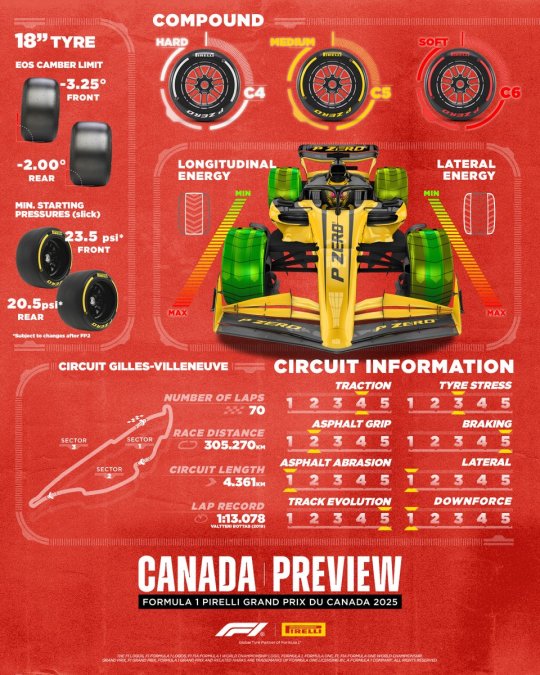
canadian gp 2025 | preview and expectations for ferrari (brakeboosted)
tl;dr - track layout seems ferrari-friendly (mostly slow corners, thus minimal variety = less setup compromise), however external factors could expose key weaknesses with tyre warm-up, braking stability, and ride height sensitivity, unless they adapt with real upgrades and not just setup tweaks
more detailed analysis by brakeboosted under the cut
Looking at the layout, you'd assume the track would suit Ferrari a lot, but that really isn't the case in my opinion. You think, slow corners, long straights, no fast ones, no setup compromise = Ferrari good. I think some external factors change that a bit. #CanadaGP 🇨🇦
Everything I'm about to write is under the assumption that the issues we've experienced have not been resolved.
Mostly slow corners and on a non-abrasive surface. Generating tyre temp is a persistent issue we've had over the last two seasons. I don't believe this is completely resolved. Hysteretic heating is at a minimum due to the low lateral energy transfer through the tyres. Molecular adhesion is also low due to the grip of the surface. This means, you won't be able to produce the heat needed for an optimal qualifying lap, and you put yourself in a position where graining on the front axle becomes a potential hindrance in the race as well. In the last two races, I think there might have been a small step in the right direction regarding the heating of the tyre. I personally don't think there is enough performance overhead to unmask that issue completely.
One thing to note is Pirelli have gone a step softer with the compounds. This might offset the potential damage these factors may cause to Ferrari, but the C6 tyre in general is just not a good tyre, I don't expect that to change this weekend.
The next thing is braking.
Something I have already noticed during testing, and it's been reaffirmed throughout the season, especially in Miami, is the unpredictability of high speed braking with this car. Another reason I think we might struggle, and more specifically in qualifying.
I believe this is a product of some extreme setup compromises, as mentioned by the drivers regularly throughout the season. It forces them to be rather conservative on the brakes on entry, and then try to use the already weak rear end on exit. It almost always results in a net time loss in similar scenarios at other circuits. I'd like to reiterate that this is under the assumption that no fixes are put in place this weekend.
The last thing I want to discuss is the bumpy nature of the track. Even post resurface the track is incredibly bumpy, that means cars will most likely not run at optimal ride heights, also because of the sheer amount of kerbs that need to be ridden. At this stage, I believe we are all familiar with the incredibly narrow working window of the SF-25. Factors like these in my opinion affect as an order of magnitude higher than the others. I don't like to use Monaco as a reference to make such judgments because it's too much of an outlier.
I see Pirelli have listed the downforce at 1/5, which is interesting. To me, is closer to a 2/5 than a 1/5, but I digress. If anyone runs a potential 1.5 setup this weekend, it McLaren, who quite frankly will be untouchable again. I'll put Mercedes/Red Bull in a 2nd force battle. Behind them Ferrari, quite frankly I think that is generous.
Two things I'd like to see Ferrari do this weekend:
1- Bring upgrades, and by that I mean meaningful upgrades.
2- Prioritize mechanical grip over aerodynamic grip.
What I mean by point 2 is, they should at the very least trial a lower downforce setup. Run softer on the rear, but reduce the amount of vertical load at the end of straights to reduce the bottoming. Give yourself a tool to be strong this weekend. Too often this year have we seen a Ferrari with no particular strengths. I don't necessarily expect this to be the answer to their problems, but I'd like to at least see them try different things.
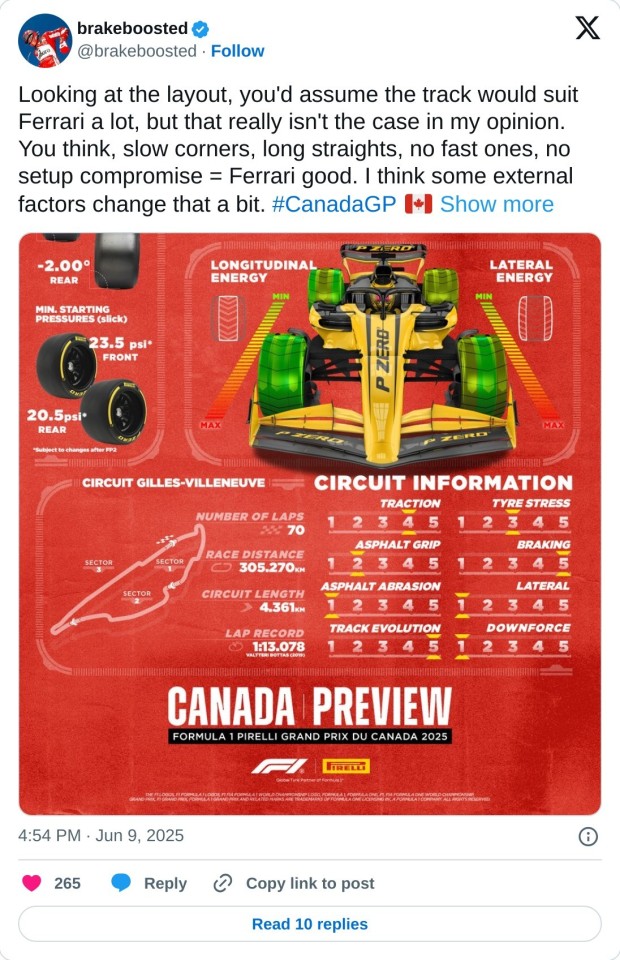
#canadian gp 2025#f1technical: tracks#f1 tracks: montreal#f1technical: car talk#brakeboosted#sf#f1technical
3 notes
·
View notes
Text
since nobody asked me about my ideal hwlr season 3 im gonna do it myself spoilers ahead obviously

under the cut bc its getting stupidly long and also 👉 mostly unedited rambling you have been warned
ok so for starters. rearview backstories are overhauled. i dont like professor rearview being a camper with dash originally, it doesnt match with his initial motivations of disliking cars if he's out for dash SPECIFICALLY. also its a lame and overused backstory especially in kids tv. so instead he's an outside force through and through who dislikes cars for multiple valid reasons, ie accidents, dependence on cars in infrastructure, poor urban development, lack of freedom etc. he's absolutely an r/fuckcars user (and i say this as someone who agrees with this viewpoint). he's big on bikes specifically (why else does he have the bike helmet lol) besides his monsters. im keeping the monsters bc like once you remove the monsters hes basically an entirely different character. i ALSO dont want to make him too much like dr. eggman bc hes kind of an eggman ripoff already. also 👆 since dash is an inventor/roboticist in her own right it adds a nice contrast between mechanical and biological inventions. ALSO also rearview and dash do NOT look the same age at all (dash is like 20-30 tops and rearview is 50-60) so it doesnt make sense for them to have been campers together (since the campers in the show are in the 10-13 range i think). to ME. also he seems like a cornelius to me. (he adopted rearview as a nickname yes i KNOW eggman already did this and that i SAID i didnt want him to be an eggman ripoff but this doesnt have to come up in the show ✋🤚)
once thats out of the way cruise is his not-yet-adopted nibling, not his child. rearview was single and childless (he preferred it that way), a biology/bioengineering professor somewhere outside hot wheels city. i see hot wheels city in the show as equivalent to manhattan so he'd be in like upstate new york or boston. but his sibling/s were killed in a car accident- he already disliked cars and hot wheels city, but this motivated him to take things into his own hands. he developed these large animal like monsters (more fleshy and realistic compared to dash's cartoony, stylized robotic obstacles) to ultimately destroy the ultimate garage and bring the whole city down. because he was cruise's next of kin, he got custody over them. cruise is rearview's nibling and not child here since like. coop has HIS dad and axle has HIS dad and its like the writers didnt have any other familial relationships on hand. also yes i know uncle larry's there but he doesnt have the same primary caretaker role coops dad and striker spoiler do
(now i COULD ALSO make cruise bioengineered that would be sick but mega wrex put a bad taste in my mouth so im gonna say no. do NOT bring up brights, she has a prosthetic, that's different. ALSO DO NOT BRING UP SQUEAKERS in my ideal hwlr squeakers is a decently intelligent roomba kinda deal that dash made as a companion but hes like. aibo level. and people just project onto him as people tend to do with robots)
with that out of the way CRUISE is this little orphan kid that just got adopted by their uncle. they go along with it bc a) that's their uncle like xe lives with them. b) its fun to make the other kids really mad (cruise was a bit of a bully but was defensive instead of offensive since they had like 0 friends and werent popular at all so they think everyone hates it). c) its fun to be evil and d) revenge for the death of xyr parents. instead of the street shrieker being a sports car, its a bike augmented with car power shit. not a motorbike bc i dont think rearview would be into those but a really souped up, high performance e-bike. with scale patterns (prof. rearview's has more of a sinewy, muscle texture).
professor rearview was initially reluctant to let cruise race but it appealed to his ego to let a bike user win against car racers so he relented but is still VERY concerned over cruise's safety. he's still shaken up by the accident while cruise shoves that shit down and is headstrong/stubborn. cruise gets super involved in the races when they happen and starts to really enjoy racing, rearview doesnt exactly enjoy that fact? but is happy cruise has something they like.
(i should mention here that while i do hc cruise as enby, they aren't out yet. everyone still thinks xe's a girl and refers to xem as such. cruise is still figuring itself out, especially now that it's growing into puberty (around 11-12yo). cruise doesnt feel safe coming out to either their family or the campers).
everything is mostly the same in seasons 2/3 except that i took megawrex out back. yeah theres no megawrex here he gives me. INCREDIBLE fury i want him torn to shreds. he pisses me off. if they REALLY want to include monster trucks make it a cartoon and the real megawrex has a human driver.
but when cruise wins the ultimate garage, they start to really like it. rearview thinks he owns the place and uses all the cars to cause chaos in the city, while cruise explores the insides of the garage. remember: theyre a very vulnerable, emotionally charged and orphaned kid who just won the keys to the city. when professor rearview decides to destroy the garage via self-destruct, cruise remembers that xe won the garage, not xyr uncle. so when coop goes to shut off the self-destruct, cruise gets there first and officially takes over the garage, kicking its uncle out in the process.
cruise's keeping of the garage is a little bit selfish (wants all the cool amenities for themselves), a little bit selfless (doesnt want people to be hurt in the collateral damage), but mostly they just want to keep racing and thrive off the struggle of their opponents. xe enjoys playing the heel! so cruise's plan is to control the garage, let the campers and other racers struggle to win it, and (eventually) pass it on when they felt like it. they didnt think this through all that well tbh.
also this is at the top of their game. cruise has the world in the palm of xyr hands (so xe thinks) and this is when cruise decides to come out. its very casual. axle just mentions like ugh its professor rearviews evil niece and cruise says "oh actually im not a girl." more softly than they'd like. the campers are confused ("wait you're a boy?" "it doesnt sound like you are" "maybe she's actually a monster in disguise!!") until xe clarifies they aren't a boy or a girl. they're nonbinary. have been for a while, but now that they have the ultimate garage, they're confident enough to say it out loud! after all, none of the campers can stop xem, and neither can xyr uncle. what's anyone gonna do about it? professor rearview gets all huffy like UGH im your UNCLE i CARE FOR YOU WHY DIDNT YOU TELL MEEE and cruise goes stfu you suck and are generally unpleasant to be around (he also tends to misgender them and thinks winning the garage got to their head which is why theyre nb now).
this goes on for another season bc hwlr NEEDS the extra runtime badly blah blah blah coop wins the garage back on some technicality. cruise thrives on technicalities xe loves technicalities and loopholes. and living at the garage has been nice and all but also very lonely. but they can't just give up now right? theyre not ready and cant ever be ready, not like this. coop offers to let them stay and they decide not to. cruise leaves their baggage in hot wheels city, goes back to their uncle's old place upstate, cat in tow. maybe go back to school, get into the trades, professional racing? there's so many more possibilities out there, when the road forks.
2 notes
·
View notes
Text
EWO Off-Road Parts Review: Why Their Dana 44 Steering Kit Dominates the Trail

When you’re pushing your rig through rocks, mud, and miles of punishing terrain, your steering system takes a beating — and if you’re running a Dana 44 front axle, the choice of steering components can make or break your off-road experience. That’s where EWO Off-Road’s Dana 44 Steering Kit comes in — and it’s quickly becoming a favorite among wheelers for all the right reasons.
From bulletproof strength to smart design, here’s an in-depth look at why EWO’s Dana 44 Steering Kit outperforms competitors and dominates the trail.
Built Like a Tank: Materials That Take a Beating
One of the biggest concerns in any steering setup is durability — and EWO doesn’t cut corners. The kit is built using 1.5" DOM steel tubing with a .25" wall thickness, which is about as tough as it gets in the off-road world.
Whether you’re climbing jagged boulders or plowing through ruts, this kit is made to take serious punishment without flexing or bending. The use of heavy-duty Chromoly heim joints or tie rod ends (depending on your chosen configuration) ensures the weak points in your steering system are reinforced — not compromised.
Other kits may look similar on paper, but in real-world trail conditions, EWO’s rugged build holds up when others tap out.
True Bolt-On Convenience (With Pro-Level Flexibility)
What sets EWO apart is how installer-friendly the kit is, without sacrificing performance. The Dana 44 Steering Kit is designed to be a bolt-on solution, making it ideal for DIY garage mechanics or seasoned builders alike.
The tie rod and drag link lengths are fully adjustable, giving you flexibility to accommodate:
Suspension lifts
Aftermarket knuckles
Crossover steering configurations
High steer conversions
If you’re already running a modified Dana 44 or planning upgrades down the road, EWO’s steering kit is future-proof and compatible with a wide range of setups.
Trail-Tested Geometry: No More Sloppy Steering
Here’s where EWO’s attention to detail really shines — the steering geometry. The angles and lengths of the drag link and tie rod are engineered to reduce bump steer and maintain proper alignment, even under heavy articulation.
You’ll notice the difference on your very first trail run:
Tighter, more responsive steering
Minimal correction needed on uneven surfaces
Reduced stress on knuckles and linkage points
Instead of constantly wrestling your wheel through rocky passes, the EWO Dana 44 kit gives you control and confidence, letting your rig go exactly where you want it to.
Compatible With High Steer and Flat-Top Knuckles
Planning a high steer conversion? Already upgraded to flat-top knuckles like those from Reid Racing or RuffStuff?
Good news — EWO’s Dana 44 Steering Kit is ready for it.
The kit comes with hardware options that make it easy to pair with aftermarket high steer arms. That means more clearance, better protection from rocks, and optimal alignment for lifted rigs.
You don’t need to worry about retrofitting or welding just to make things fit — EWO builds their kit with real off-roaders in mind.
Simple Maintenance, Maximum Trail Time
Off-road parts shouldn’t just be tough — they should also be easy to maintain. EWO’s steering kit features greaseable joints, replaceable heim ends, and corrosion-resistant finishes.
That means fewer breakdowns, less time under the rig, and more time doing what you love — wheeling.
Bonus: the kit ships with all necessary hardware and clear install instructions, so even if you’re new to steering upgrades, you’ll feel supported every step of the way.
Rave Reviews from the Off-Road Community
A quick look through online forums and user reviews reveals a common theme — off-roaders love EWO’s Dana 44 Steering Kit. Some highlights include:
“Installed it in under two hours. Steering feels rock solid now.”
“Held up to Moab with zero issues.”
“Best upgrade I’ve done since the lift kit.”
Whether it’s casual weekend wheelers or hardcore rock crawlers, users are impressed with the performance and peace of mind that comes with EWO gear.
Final Verdict: Worth Every Penny
When it comes to upgrading your Dana 44 steering setup, EWO Off-Road delivers a kit that’s reliable, rugged, and ready for anything. From high-quality materials and smart design to easy compatibility and rave-worthy performance, this is one kit that lives up to the hype.
If you’re serious about tackling tougher terrain with confidence — and want to stop worrying about bent tie rods or vague steering feel — the EWO Dana 44 Steering Kit should be your go-to upgrade.
Your rig deserves it. Your next adventure demands it.
#Dana 44 Crossover Steering Kit#Dana 44 High steer Kit#Chevy 10 Bolt Steering Kit#Dana 44 Steering Kit#Dana 44 Knuckle kit#Dana 44 High Steer Arms#Dana 44 Steering Arms
1 note
·
View note
Photo

New Post has been published on https://www.vividracing.com/blog/craziest-sounding-porsche-981-boxster-with-vr-tuned/
Craziest Sounding Porsche 981 Boxster with VR Tuned

When you think incredible exhaust sounds, you usually think of a Ferrari V8 or V12. You must definitely would think of a Lamborghini Huracan V10 or Murcielago V12. But would you have thought of a Porsche Boxster with a 2.7L 6cylinder flat-6 engine? Well that is what this has with some upgraded parts from us here at Vivid Racing. This Porsche Boxster if from the 981 generation which was produced from 2012 to 2016 as a 2.7L and 3.4L except the GT4 which was a 3.8L. This was the final year the Cayman and Boxster would be a Normally Aspirated engine as in 2017 the car chassis was changed to the 718 and became turbocharged. As an NA motor, the sounds produced from the flat-6 engine had an incredible tone, but was harder to gain performance compared to the turbo models. To further enhance the usual docile sound of a Cayman/Boxster to meet the needs of the general population, this Porsche was upgraded with a complete straight pipe exhaust system and a VR Tuned ECU Flash.
youtube
Exhaust systems for the Porsche Boxster 981 are designed to increase torque and help it breath to keep pulling to redline. To achieve this, you must do a header and muffler setup. Most 981 exhaust systems feature new over axle pipes which eliminate the 2nd catalytic converter. The primary catalytic converter is on the headers and when you do this as a full race setup, the sound and performance comes alive! There are many popular brands when it comes to doing an exhaust on the Porsche 981 Boxster or Cayman. This includes systems from companies like Armytrix, Soul Performance, Capristo, AWE, and others as seen here – https://www.vividracing.com/index.php?keywords=Porsche+981+exhaust. Because most of these exhausts are modular to work with the stock headers, you can mix and match brands between the exhaust and headers depending on price. If you need to maintain your factory emissions, then we recommend getting a set of headers with high flow cats. These will still help improve performance and sound, but not be as loud as a straight piped exhaust.


Improving the cars horsepower and torque as well as throttle response is easily done with our VR Tuned ECU Flash. ECU Tuning is a simple process that requires reading out the cars original file via the OBDII port, making changes to map data that alters things such as fuel, timing, and throttle maps, then flashing this back to the vehicle. VR Tuned handles all of this for you via an easy to use and convenient tool so you can do this via the comfort of your own garage. With our 10+ years in Porsche tuning, we have proven maps that take into account your car stock or modded with common upgrades such as exhaust, intake, throttlebody, or headers. VR Tuned can do other options for customers on their Porsche ECU such as Pops & Bangs as shown on the video. This option gives you the “crackle” sound on deceleration and with the straight pipe exhaust will shoot flames as well. With the device we provide, this includes your original file so you can flash back to stock at anytime if needed. An ECU Tune for the Porsche 981 Boxster/Cayman is one of the best mods you can do to really liven up the driving the experience! You can view all of the Porsche 981 ECU Tuning Options Here – https://www.vividracing.com/index.php?keywords=vr+tuned+porsche+981



2 notes
·
View notes
Text

Aston Martin DP214
In 1962, with Ferrari's 250 GTO homologated for racing, Aston Martin decided to adopt some of the modifications that had made the GTO so successful. This led to the creation of the DP212, which featured a low-profile nose, a sleek body, and a Kamm tail to improve aerodynamics, particularly at high speeds, similar to the 250 GTO. Other enhancements included an enlarged four-liter engine, a De Dion-type rear axle, and a lighter chassis made with more aluminum. Aston Martin completed a single DP212 just in time for the 1962 Le Mans 24-hour race, where it showed great potential before retiring in the sixth hour.
The following year, Aston Martin introduced the DP214, building two examples (#0194 and #0195). The DP214 was designed to be lower and wider than the DP212 to improve stability and performance at high speeds. These modifications allowed the car, with its 317 bhp engine, to reach speeds of up to 186 mph on the Mulsanne Straight. Aston Martin entered both DP214 cars in the 1963 Le Mans race alongside a single DP215, which competed in the prototype class. Despite a strong showing, both DP214s retired after ten hours, with Jim Kimberley and Jo Schlesser withdrawing while in third place overall.
Throughout the season, the cars continued to compete, appearing at Brands Hatch, Goodwood, and Monza, but they only managed a single victory at the Coupe de Paris in Monthléry. After the initial season, the works cars were sold to the Dawnay Racing Team. Unfortunately, one of the cars was destroyed in a fatal crash at the Nürburgring, while the other has been partially or fully replicated and occasionally appears at UK motoring events.
4 notes
·
View notes
Text
Race and Car Hauler Trailers Explained: Types, Features & Buying Tips

Introduction
Whether you're a professional racer, an automotive enthusiast, or a dealer transporting vehicles, investing in the right trailer is crucial. Understanding the types, features, and buying tips of cover race trailers and car haulers ensures your vehicle is moved safely, securely, and efficiently. In this guide, we'll break down everything you need to know before you hit the road.
What Are Cover Race Trailers and Car Haulers?
Car haulers are specialized trailers designed for transporting vehicles from one location to another. They are built to carry everything from classic cars to race-ready beasts. Cover race trailers are a subtype of car haulers that are enclosed and purpose-built for racing events. These offer enhanced protection, storage, and customization for race teams and enthusiasts.
While car haulers come in both open and enclosed formats, race trailers are typically enclosed to keep high-performance vehicles safe from elements, theft, and road debris. They also often include workspace and gear storage.
Types of Car Hauler Trailers
1. Open Car Haulers
These are flatbed trailers with no walls or roof. They are lighter, more affordable, and easier to tow. Commonly used for short-distance hauls or by those who don't require added protection.
Benefits:
Lower cost
Better visibility and access
Lightweight and fuel-efficient
Considerations:
No protection from weather or theft
Requires better tie-down and load balance
Exposes the vehicle to debris and elements
2. Enclosed Race Trailers (Cover Race Trailers)
These are box-like trailers that enclose the vehicle entirely, offering complete protection. Often used in motorsport industries, they double as mobile garages or workspaces.
Benefits:
Weatherproof and theft-resistant
Professional appearance
Ample storage and workspace
Customizable interiors
Considerations:
Higher cost
Heavier – may require larger tow vehicles
Reduced visibility when backing or maneuvering
3. Gooseneck and Fifth-Wheel Trailers
These trailers connect to the bed of a pickup truck instead of a standard bumper hitch. They offer increased stability, turning radius, and payload capacity, making them ideal for long-distance hauls or multiple vehicle transport.
Benefits:
Better weight distribution
Larger carrying capacity
Smoother towing experience
Considerations:
Requires a compatible truck bed setup
Not ideal for casual or short-distance hauls
Key Features to Look for in Car Haulers and Race Trailers
1. Trailer Size and Load Capacity
Choosing the correct size is vital. You should account for the vehicle's length, width, and height, along with any extra gear. A typical race car trailer is about 20–28 feet long, while open haulers can be shorter.
Tip: Always check the Gross Vehicle Weight Rating (GVWR) and ensure it matches your towing vehicle's capacity.
2. Axle and Suspension Type
The number of axles and the type of suspension affect both safety and comfort.
Single Axle: Suitable for smaller vehicles or lightweight transport.
Tandem Axle: Offers better stability and weight distribution.
Torsion Suspension: Provides smoother rides compared to traditional leaf spring setups.
3. Frame Material
Steel: Strong and cost-effective, but heavier and prone to rust.
Aluminum: Lightweight and rust-resistant, ideal for those who prioritize fuel economy and longevity.
Choose based on your usage frequency, climate conditions, and budget.
4. Ramps and Entry Points
Whether you're loading a race car or a sedan, you need a ramp system that's safe and easy to use.
Rear Fold-Down Ramps: Most common, suitable for standard loading.
Beavertail Design: A sloped rear for low-profile vehicles.
Side Doors: Useful for access without unloading the car.
5. Interior Customization
Especially for cover race trailers, interior space is often tailored with:
Storage cabinets and tool chests
Lighting systems (LED is preferred)
Flooring options (rubber coin, diamond plate)
Generators and climate control
Tire racks and workbenches
These features turn your trailer into a mobile pit crew station.
6. Ventilation and Climate Control
If you're hauling race cars or sensitive equipment, consider roof vents, sidewall vents, and air conditioning units. These regulate temperature and humidity inside enclosed trailers, which is crucial during long hauls or extreme weather.
7. Safety Features
Safety should always be a top priority. Look for:
Strong tie-down points or E-track systems
Breakaway kits and electric brakes
LED lighting for visibility
Reflective tape and proper signage
Buying Tips for First-Time Buyers
Know Your Purpose
Are you hauling once a month or every weekend for races? Your usage frequency helps determine if you need a basic open hauler or a high-end enclosed trailer.
Understand Legal Requirements
Every state has different laws regarding trailer size, brakes, and lighting. Ensure your purchase complies with local and interstate regulations.
Match With Your Tow Vehicle
Always calculate the combined weight of the trailer and vehicle. Make sure your tow vehicle has adequate towing capacity, proper hitch configuration, and brake controller systems.
Think Long-Term
A trailer is a long-term investment. Go for quality construction, rust resistance, and brand reputation even if it costs more initially. It'll save you repair and maintenance headaches down the line.
Consider Resale Value
Enclosed aluminum trailers usually hold better resale value than steel open trailers. If you think you'll upgrade in the future, factor this into your purchase.
Benefits of Using Cover Race Trailers and Car Haulers
Professionalism: Nothing says you're serious like a well-equipped race trailer.
Efficiency: Quick setup, organized tools, and secure transport all add up.
Protection: Keep your car safe from rain, dust, sun, and curious eyes.
Versatility: Use them for car shows, racing, dealerships, or even as mobile workshops.
Conclusion
Choosing between cover race trailers and car haulers depends on your needs, budget, and frequency of use. For occasional vehicle transport, an open hauler might suffice. But if you're racing, showcasing, or need added security and storage, an enclosed trailer is worth the investment. Prioritize features like size, axle type, frame material, and loading mechanisms to ensure a seamless hauling experience.
Shop Smart with Phoenix Trailer Depot
Looking for the perfect cover race trailer or car hauler? Look no further than Phoenix Trailer Depot. We offer a wide range of trailers designed to meet every need—from weekend racers to professional teams. Our expert staff can help you choose the right size, type, and features to suit your requirements.
0 notes
Text
Boost Your Racing Edge with Oval Track Racing Wrap Axles

In the high-stakes world of oval track racing, every component of your vehicle must perform flawlessly under pressure. One essential part that often determines success is the axle. Strange Oval, a leader in performance racing parts, offers specialized Oval Track Racing Wrap Axles that are engineered for strength, flexibility, and reliability.
Unlike standard axles, wrap axles are designed to handle the extreme lateral loads and high torque levels experienced on oval tracks. These axles are built to flex under load—absorbing energy and reducing stress on other drivetrain components. This unique feature enhances traction, improves stability, and delivers a smoother ride through every turn. Whether you race on dirt or asphalt, Oval Track Racing Wrap Axles provide the edge you need to outperform the competition.
Strange Oval uses only high-quality materials and precision engineering to craft these axles, ensuring they meet the demands of serious racers. The ability to customize axle wrap gives drivers control over how their car responds to different track conditions—making setup and tuning more effective.
If you're looking to gain a competitive advantage, upgrading to wrap axles is a smart move. You can easily browse and purchase these high-performance components online through the Strange Oval website. The online store features detailed product descriptions, specs, and support to help you make the right choice for your race car.
Don't let subpar equipment hold you back. Invest in Strange Oval’s Oval Track Racing Wrap Axles today and experience the difference on race day. Visit Strange Oval to shop online and stay ahead of the pack.
Contact Information:
For more details or to request a sample, visit Oval Track Racing Wrap Axles or contact Strange Oval directly:
Phone: 800-653-1099
Choose the Oval Track Racing Wrap Axles for a reliable, efficient, and high-quality products.
Stay in touch with the latest product developments and company news:
Facebook
Youtube
X
#Strange Oval Wrap Axles#KERA Axles#Oval Track Racing Axles#Split Diameter Axles#Equal Diameter Axles#Late Model Racing Axles#Modified Racing Axles#Stock Car Axles#Torsional Twist Axles#High-Performance Racing Axles#Durable Racing Components#Precision Machined Axles#Lightweight Racing Axles#Enhanced Traction Axles#Asphalt Racing Axles#Dirt Track Racing Axles#Racing Axle Technology#Strange Engineering Axles#NASCAR Approved Axles#Performance Racing Parts#Oval Racing Product
1 note
·
View note
Text
Best Drag Racing Axle Setups by Strange Engineering
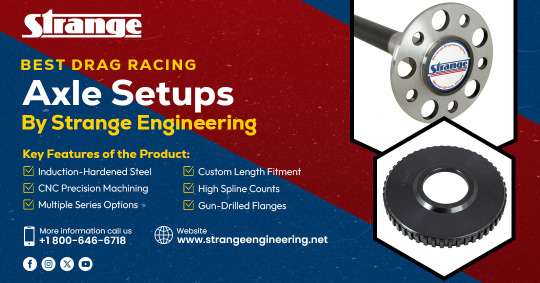
Strange Engineering’s drag racing axle setups are made for serious racers who need strength, reliability, and consistent performance. Perfect for both street and track, these axles handle high horsepower with ease and help you stay competitive where it counts.
Key Features of the Product:
Induction-Hardened Steel
CNC Precision Machining
Multiple Series Options
Custom Length Fitment
High Spline Counts
Gun-Drilled Flanges
Contact Information:
For more details or to request a sample, visit Strange Engineering’s drag racing axle setups, or contact Strange Engineering directly:
Phone: 800-646-6718
Visit: https://www.strangeengineering.net/
Address: 8300 N. Austin Ave, Morton Grove, IL
Stay in touch with the latest product developments and company news:
Facebook: https://www.facebook.com/StrangeEng
YouTube:https://www.youtube.com/channel/UCheMfttsl3BZV1dyokhrpSA
X: https://x.com/RaceStrange
Instagram: https://www.instagram.com/racestrange/
#Rear Axles#Strange Engineering Rear Axles#Drag Racing Axles#Performance Axles#High Strength Axles#Street and Strip Axles#Custom Axle Shafts#9 Inch Ford Axles#Axle Shaft Kits#Racing Axle Components#Heavy Duty Rear Axles#High Performance Drivetrain#Race Ready Axles#Alloy Axle Shafts#Performance Rear End Parts#Bolt-In Rear Axles#Aftermarket Axles#Ford Axle Upgrades#Driveline Components#Strange Axle Kits
1 note
·
View note
Text
Explore Top Quality Kart Parts UK for Peak Racing Performance
Whether you're a professional driver or a weekend karting enthusiast, choosing durable and high-performance components is crucial for safety and success on the track. Our extensive selection of precision-engineered hardware ensures optimal performance and reliability in every race condition. From chains and sprockets to axle components, IC Kartstore offers only the most trusted products tested in competitive karting environments. Every piece in our collection is designed for compatibility with major chassis brands and racing standards. When you’re looking for kart parts UK, rely on a supplier committed to both quality and speed. At IC Kartstore, shop smart, race faster, and stay ahead.
0 notes
Text

AMG GT R Pro „The Monster of The Green Hell“.
Back in the days the AMG GT R PRO was characterised by yet further improved driving dynamics, in particular on the racetrack. The experience from the AMG GT3 and AMG GT4 racing cars entered into the development.
The measures from motorsport can be clustered in four areas: suspension, lightweight construction, aerodynamics and looks.
Suspension: the optimal set-up
The AMG coil-over suspension offers even more choices for tailoring the set-up to the particular circuit. As in professional motorsport, the driver is not only able to set the spring preload length mechanically, but can now also adjust the compression and rebound of the dampers. This is done quickly and precisely without tools via a click system with an integral adjustment dial on the damper. The compression rate is adjusted separately for high-speed and low-speed movements.
This means that the settings can be dialled-in for slow and fast compression movements as is common practice in motorsport. This allows influencing the body dive and roll as the well as the traction of the AMG GT R PRO even more selectively.
The front axle is fitted with an adjustable torsion bar made of lightweight carbon fibre. Its counterpart at the rear is made of steel, is likewise adjustable and also saves weight due to its hollow tube design.
The AMG GT R is already fitted with Uniball spherical bearings at the lower wishbones of the rear axle. The AMG GT R PRO now gets these bearings also for the upper wishbones.
Mercedes-AMG One man, one engine Handcrafted by Michael Kübler @f1mike28 in Germany Affalterbach. Driving Performance is our Passion! Mercedes-AMG the Performance and Sports Car Brand from Mercedes-Benz. Mercedes-AMG Handcrafted by Racers.
Fuel consumption combined: 12,5 - 11,4 l/100 km | CO2-Emissions combined: 284 - 261g/km.
#amg#amggt#amggtrpro#amggtr#amggtrroadster#amggtroadster#gtr#amggtblackseries#mercedesamg#mercedes#mercedesbenz#affalterbach#onemanoneengine#pagani
9 notes
·
View notes
Text
youtube
The Volvo 850 was launched in 1992 as a front-wheel-drive family car with a transversely mounted 2.0 to 2.5-liter inline-five engine. It featured a sophisticated multi-link rear suspension and a focus on safety and comfort. But beneath its practical image, the 850 had solid engineering — enough for Volvo to take it racing.
In 1994, Volvo entered the British Touring Car Championship with the 850 Estate — the first time a wagon had competed at this level. Developed in collaboration with Tom Walkinshaw Racing, or TWR, the BTCC-spec 850 was fully race-prepped.
It ran a naturally aspirated 2.0-liter inline-five engine producing around 280 horsepower at over 8,000 RPM, mated to a six-speed sequential gearbox. It featured front-wheel drive, a limited-slip differential, race-tuned suspension, and AP Racing brakes. The body was stripped and reinforced, weighing in at roughly 975 kilograms.
Aerodynamically, the estate shape wasn’t ideal. Its tall rear created more drag compared to the sedan. But the longer roofline added stability, and the car’s unique profile helped grab media attention.
The car was driven by Rickard Rydell, a Swedish touring car specialist, and Jan Lammers, a former Formula 1 and endurance driver. Despite its unconventional form, the 850 Estate showed competitive pace.
While it didn’t win races, it scored consistent mid-field results — including a best finish of fifth place at Snetterton. It laid the groundwork for future success. In 1995, Volvo switched to the 850 saloon, retaining the same mechanical setup but with better aerodynamics. That year, Rydell won two races and finished third overall in the championship standings.
The estate only ran for one season, but it left a lasting impression.
Volvo 850 Estate BTCC 1994 Technical Specifications
General Model Volvo 850 Estate Year 1994 Series British Touring Car Championship BTCC Team Volvo TWR Tom Walkinshaw Racing Drivers Rickard Rydell Jan Lammers
Engine Type Volvo B5204T based inline 5 Displacement 2 0 liters 1984 cc Configuration Naturally aspirated 5 cylinders Power Output Approximately 280 hp at 8500 rpm Torque Estimated 245 Nm Valvetrain DOHC 20 valves Engine Management Racing spec ECU developed by TWR
Transmission Type Xtrac 6 speed sequential gearbox Drivetrain Front wheel drive Differential Limited slip differential
Chassis and Body Chassis Modified production unibody Body Style 5 door estate station wagon Construction Seam welded reinforced for racing Weight Approx 975 kg per BTCC regulations Roll Cage FIA spec full roll cage Aerodynamics Front splitter minimal rear wing estate roofline provided natural rear stability
Suspension Front MacPherson struts with coil springs and adjustable dampers Rear Delta link rear axle with coil springs and adjustable dampers Setup Fully adjustable racing suspension
Brakes Front AP Racing ventilated discs with 4 piston calipers Rear AP Racing solid discs Brake Bias Adjustable
Wheels and Tires Wheels 18 inch center lock alloy race wheels Tires Dunlop racing slicks BTCC control tire
Interior and Safety Interior Stripped with single racing seat Harness Racing harness Fire System Onboard fire suppression system Dash Digital dash and data acquisition system
Performance Estimates Zero to sixty mph Around 4 point 5 seconds Top Speed Approximately 150 mph depending on gearing and track
Notable Results 1994 Best Finish 5th place at Snetterton Overall Points Consistent mid field performance Public Impact High media attention due to unconventional estate body style.
2 notes
·
View notes